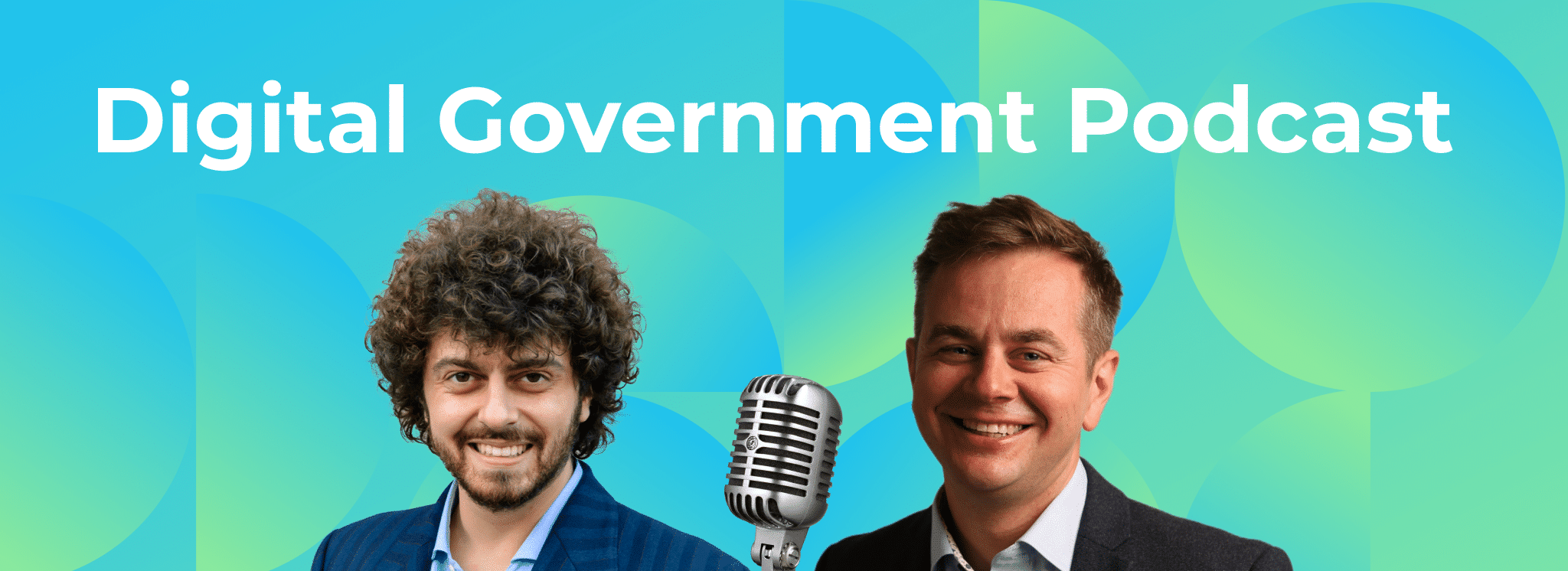
Podcast & blog: Thinking about the past and future of digital transformation
The upcoming book by e-Governance Academy, “Twenty Years of Building Digital Societies”, brings into focus the role that digitalization played in Estonia, in the countries eGA has collaborated with – and what such expertise adds to the digital development strategies of countries worldwide. Vision, sustainability, people, security. We take the long view here, in a publication absolutely not to miss, into both the past and the future of digital transformation. A peak into it is offered today by Peeter Vihma, author and social scientist at the University of Helsinki. Join us to hear how the book came about, and what makes it a must-have for your changemaker’s reading list.
Internet as a level playing field
Toomas Hendrik Ilves, former Estonian President and one of the initiators of the country’s digital journey, recalls – in the book’s foreword – how digitalization represented a level playing field for countries’ economic development. That was back in 1993, shortly after Estonia regained its independence from the Soviet occupation. But does digital transformation still presents the same opportunities today, for other countries as well?
“Yes, digitalization is still very much on the agenda,” Vihma begins with. And rightfully so. “It still creates possibilities, more than it takes them away. True that Estonia, and other countries as well, were in a unique position back then – they didn’t have to fight with the legacy of Internet infrastructure, or how people were already used to interact with government. That really boosted the country, but as digital transformation did with others too. Take the Faroe Islands, just to name one in the book, off the top of my head.”
“But nevertheless, digitalization still presents countries with the opportunity to do things differently. And not just in the technological field, but within the whole public administration, or the way government is run in a country,” Vihma says.
The four cornerstones – vision, sustainability, people, security
The book collects and explores all relevant areas governments should keep in mind when moving on path of a digital transformation journey. Expert essays, accompanied by country case studies, illustrate clearly how to – and how not to – make digitalization a reality in the most diverse areas of the world.
“And it all reflects the state of the art, of what eGA is doing, but also of the salient topics nowadays when we talk about things such as digital transformation or digital government,” Vihma says. Four cornerstones and macro themes help us navigate this expertise, as Vihma goes on to explain:
- Think Big
People generally tend to interpret digital transformation in terms of technology, specific services, or gadgets. But the main lesson is – if you really want to make a difference through digital transformation, such change needs to be systemic. Because digitalization profoundly influences the way we interact with the state, in the broadest sense. You need to ask, “What is the long term plan here?”
- Think Sustainable
Not only in the environmental sense of the word, but also in terms of capacity building. Experts at eGA argue that states should grow their own digital transformation capacities not only to kick off the process, but to keep it going as well. Especially at a time when big companies might come in with offers that seem great, but allow less space for governments to learn by doing, and become knowledgeable, efficient, and good at running the public administration.
- Think People
Questions inevitably arise over technological advancements and their use in government. What does digitalization bring about for users, citizens themselves? Does it make life better for everyone? Does it advance democracy, or is it a privilege for the few that increases disparities in society? Focusing on people means this – watching after society, and implement technology in government in a sensible way.
- Think Secure
Whenever it comes to any kind of technology entering our lives, we must make sure that digital solutions are secure. Especially when they come to be so embedded in our daily lives – through digital identity, banking, public services. Or in war times of attacks towards a sovereign state’s infrastructure, as the Russian invasion of Ukraine reminds us.
Artificial intelligence needs data – but to do what and how?
The four macro themes are obviously intertwined, they build upon each other. In the same way as, in this book, we built upon the expertise of eGA’s team and experience with digital transformation in 141 countries, and with over 280 partner organizations. We can’t tell what the future holds – but we definitely must ensure to keep a critical approach towards it.
It is easier to get caught in the enthusiasm of the moment, or of the marketing buzz, when new tech comes into the spotlight. “But what are the pros? And what are the cons? At e-Governance Academy, people are pretty aware of the negative sides [eventually involved in leading digital change in the government and society, author’s note].”
“With all technology come both opportunities and constraints.” Think of the authoritarian–democratic continuum, and how governments with diverging values might domestically make use of digital solutions in very, very different ways.
“At every step of implementing digital solutions, we must always consider – how does this relate to the values that we cherish in our society? Does it bring about justice, equality? What about improvements in quality of life?” Vihma concludes. Questions that make the core of a critical approach towards digitalization. Keeping it constructive, and focused on the long run.
Enjoy your time with “Twenty Years of Building Digital Societies: Thinking about the Past and Future of Digital Transformation” !
Paperback – 30 euros
Please contact to buy the book
The book is available in eGA’s office at Rotermanni 8, Tallinn, Estonia.
















